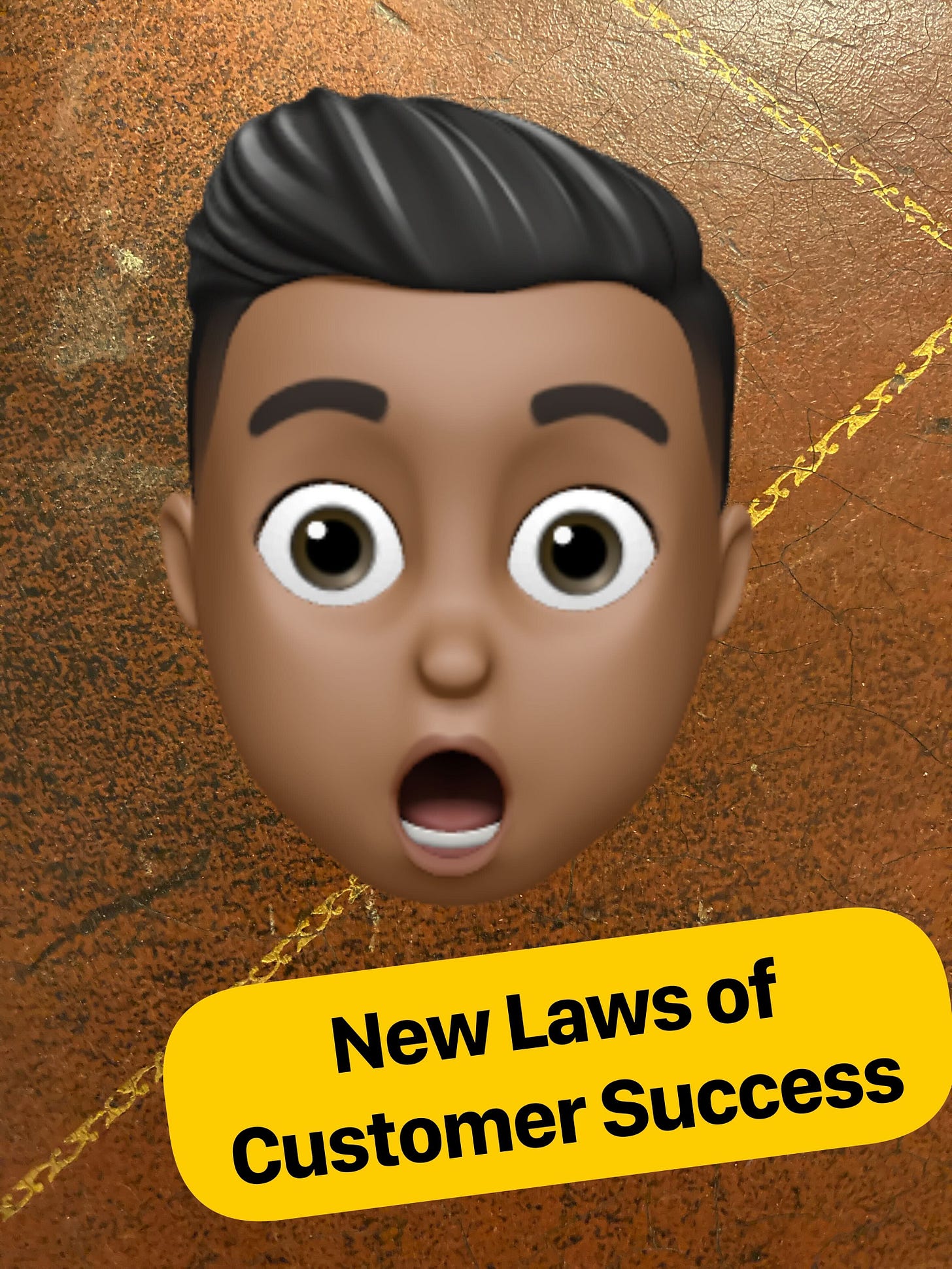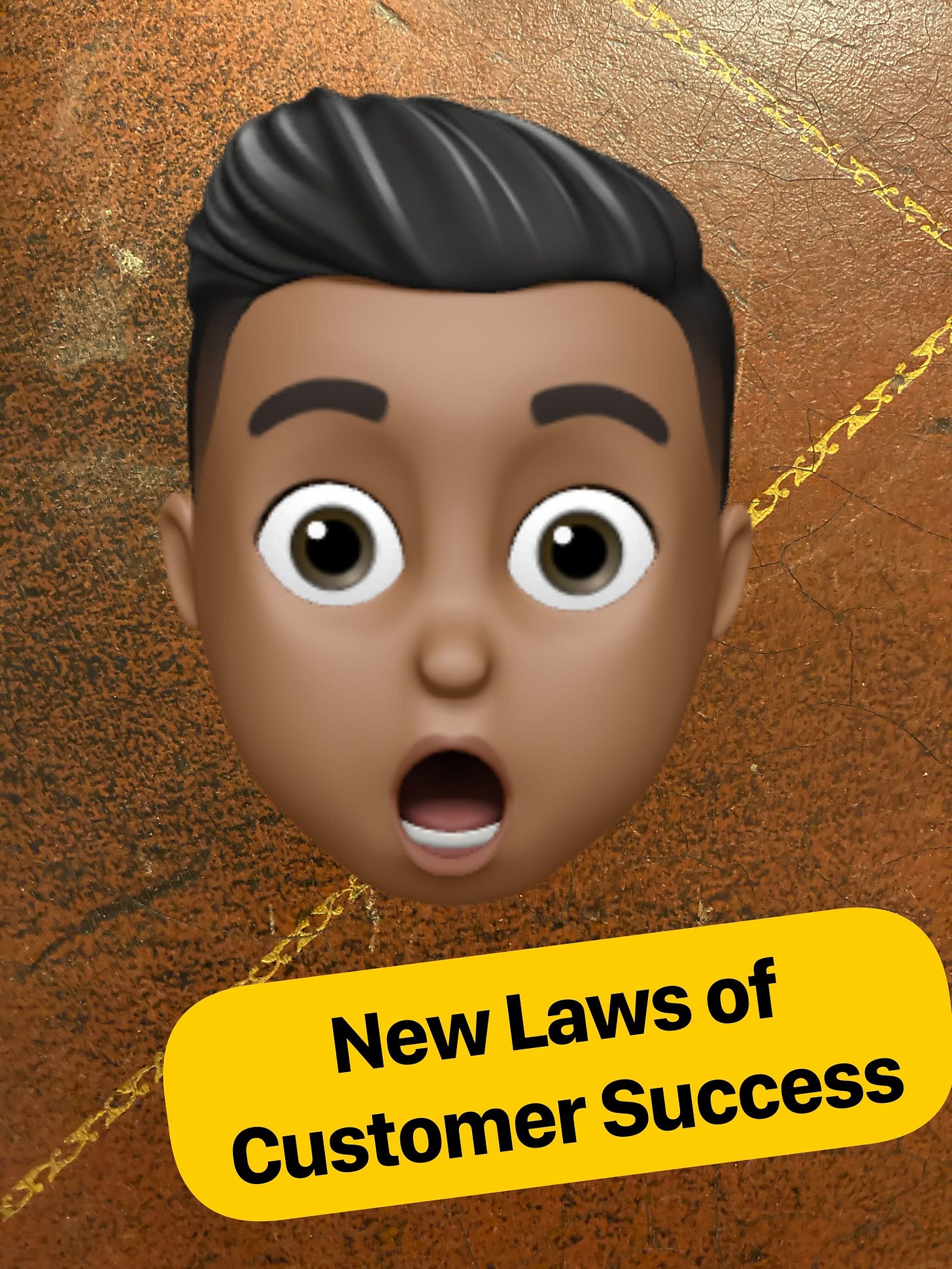A Subtle Conflict Resolution Tip For Dealing With Difficult Customers (#16)
My simple, yet respectful way to end a hostile argument with customers via email
GM. This is NLCS. The tactical newsletter that will transform you into an influential leader with your customers, and colleagues in as little as five minutes a week.
I've got a secret to tell you…
Your customers are sick of being angry at you and sending you passive-aggressive emails. Yes, they are sick and tired of being mad at you.
They want you to lead them.
Here’s what I got for you today:
- I'll go over the psychology concept of "priming" so you can manage your customers' emotions through email. By the end of this newsletter, you'll have learned about a clever psychological technique for getting what you want from your customers while giving them what they need.
What I’m learning:
I've had this happen a lot. Tell me if you've had the same thing happen to you too?
Your customer: Why can’t I get someone on the phone now??!? This is ridiculous. This is urgent. We need to speak now. Completely unacceptable.
You: No, we can’t do that. You can go to this support email, and send them a note.
Your customer: Why can’t you help me with this today?????
On, and on it goes.
Very frustrating. But I’ve found a workaround. Here’s my simple, yet respectful way to end a hostile argument with customers via email. [Examples Included]
Prime Time
Most CSMs incorrectly assume that sending a scripted message telling a angry customer where to go will calm them down.
Ironically, the opposite is true.
Look, I firmly believe that we’re not tech support. Instead, we act as advisors, and expert consultants. We’re the people that are subject matter experts who understand our clients’ current and future needs. That way, we can determine how our product will help them go from point A to point B.
Almost like a personal trainer, but for business outcomes.
But time to time we’ll be our customers’ punching bags. Being blamed for every failure or shortcoming from our product.
And some people are THE BEST at handling these tense interactions.
Their secret: They are really good at priming their customers.
Priming is a psychological concept that essentially means mentally preparing yourself for something. Consider the expression "primed and ready to go."
So if I say the word green and then show you a bunch of different fruits and ask you to pick out the lime, you'll be slightly faster than if I didn't say anything at all. There are numerous types and effects of priming that you can investigate further on your own, but this is a good starting point.
Why?
Because of how the exercise was framed. The pictures are all of bathroom related items – towel, shower, and shampoo – so it’s only logical to create a word that fits into a similar category.
Now, here’s where priming gets spookier.
Clinical Psychologist published a study in which half of the people who took part were given a language task that used words like "fit," "lean," and "active." When they were told to go to a second room one floor up, these people were more likely to take the stairs than the elevator. In fact, 92% of the people in this group took the stairs, while only 58% of the people in the control group did the same.
Priming shows us that the words we see, and hear influence our behavior.
Here’s how I’ve used it to end a hostile argument with customers via email
Customer:
With every email they had sent before, they kept getting more and more angry.
My response:
Customers’ response:
I began the email by writing, "For sure." What if I had responded, "No, I can't?" or "Unfortunately, I can’t" The client would have become defensive while reading the rest of the email if any words had a bad connotation. But by beginning with a neutralizing phrase like "For sure," I'm priming the client to envision a scenario in which we're working together rather than against one another as they read the rest of the email. The next time you find yourself in a heated argument, try starting your response with a neutralizing phrase for the other side. You’ll notice a crazy difference.
The second sentence creates a “you and me” situation as opposed to as “you vs me” scenario. My directors understand that CSMs need to ruthlessly prioritize, and we can’t do that if we’re spending all of our time reacting to support tickets.
I'm setting realistic expectations by admitting that while I'm not a technical engineer who can resolve all of their problems, I'll fight for him to have them resolved. People want to feel heard and that you have their backs. Use your words to tell them that.
When people are upset and out of control, they are in a frenzy. The customer has a tight deadline, so I can't expect the situation to calm down if I say, "Yeah, we'll look into this in 7 days." I try to match their sense of urgency, so I say, "Send me what you have for now, and I'll look into this." Sidenote: the client would have had to go through the same steps if I had told them to go to this support email and see if they could help. But notice how I put the words together in a way that evoked urgency without the need to get on a call right away.
I am not groveling. I am not creating a scenario that positions me as an inferior punching bag. And I also didn’t answer right away. I gave it about an hour or so to let the temper die down before I responded.
You have more control and power than you think over how you work with clients.
And it all starts with realizing that it's your job to steer and guide people to the outcome they want.
Trivia Time
What hit documentary cost $1.5 million to make, all of which came from corporate sponsors? This movie was directed by Morgan Spurlock, who is best known for making the documentary Super Size Me.
NLCS Finds
Pomofocus.io - Sometimes, I struggle staying on tasks. So, I use the Pomodoro Technique, which was made by Francesco Cirillo as a way to manage time. Basically, you set a timer for 25 minutes, work without getting distracted, and then take a 5-minute break. The method is so good at getting things done that it's crazy.
Trivia Answer:
The Greatest Movie Ever Sold
Now, a quick question for you: If helping a friend didn't cost you anything and you never got credit for it, would you do it?
I'd like to make a request on behalf of that friend, if you don't mind. That friend is the same as you, or was the same as you a few years ago: they want to be a great Customer Success professional, but they don't know where to look. Here's where you come in.
The only way for us to accomplish our goals at NLCS is first, by reaching them. And most people do, in fact, judge a book by its cover. In this case, judge a newsletter by its logo, and captions. If you believe in our purpose, we'd be grateful if you'd take a few seconds out of your day to share this newsletter with two of your friends who might appreciate it. It will cost you zero dollars and less than 60 seconds.
You sharing this newsletter will help…
…one more person working in Customer Success feel less isolated and lonely
...help one more Customer Success professional make a customer happy
...and help one more CSM find purpose in their job
All you have to do to make that happen is copy this link and tell them to subscribe.
That’s it for this week though - lmk - how’d I do? I really enjoyed breaking down this topic
Ya boi / friend @ NLCS
Until next time my friend :-)












